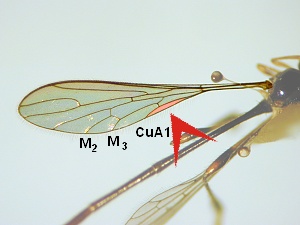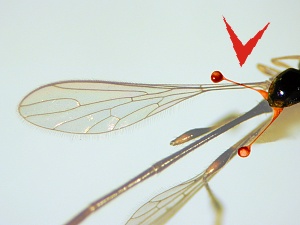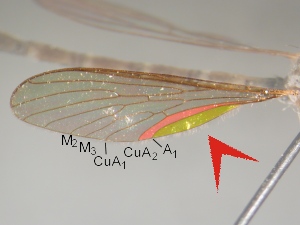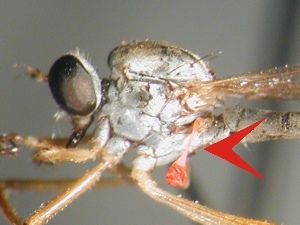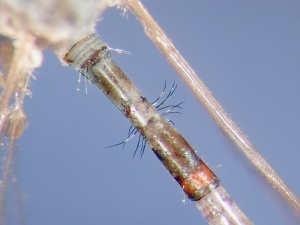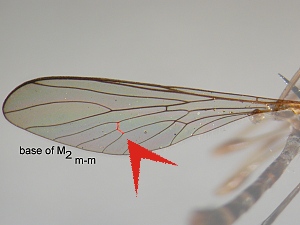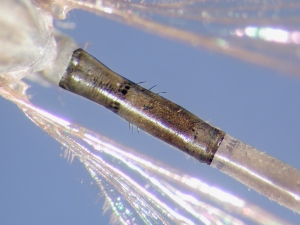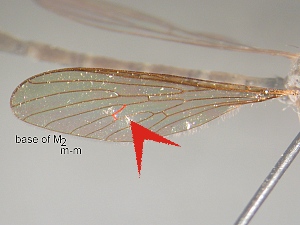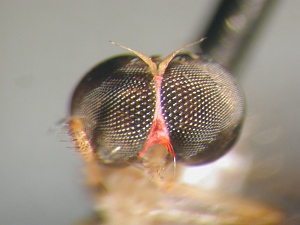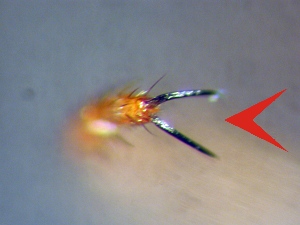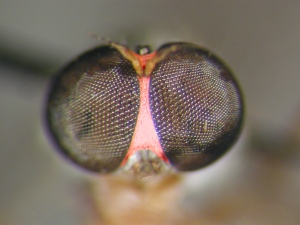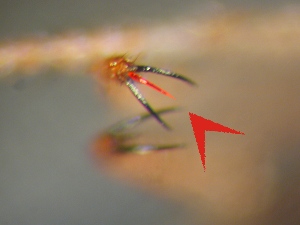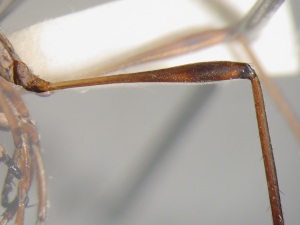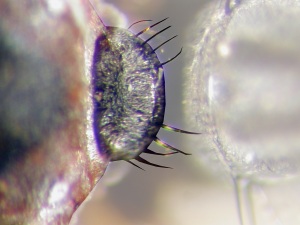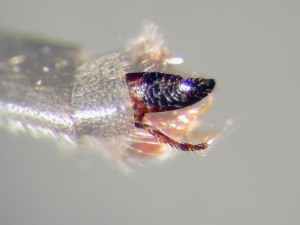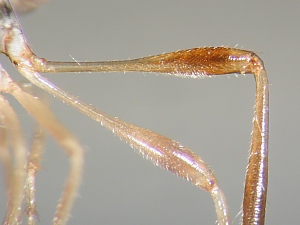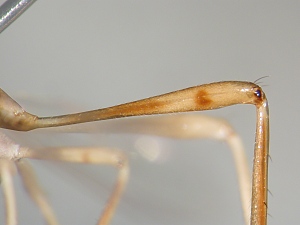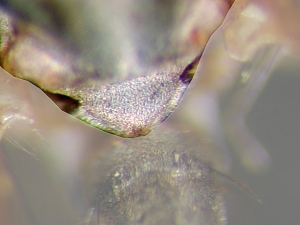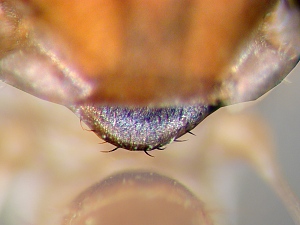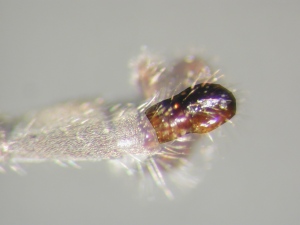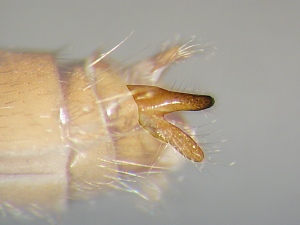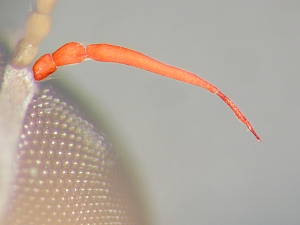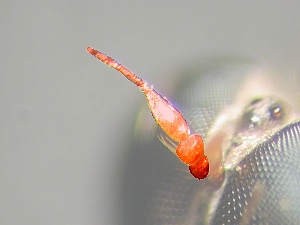Apocleinae
Asilinae
Dasypogoninae
Dioctriinae
Laphriinae
Laphystiinae
Leptogastrinae
Ommatiinae
Stenopogoninae
Stichopogoninae
Trigonomiminae
Leptogastrinae
References: Artigas, J.N. & Papavero, N. (1988): The American genera of Asilidae (Diptera): Keys for identification with an atlas of female spermatecae and other morphological details. I. Key to the subfamilies and subfamily Leptogastrinae. - Gayana. Zoologia. Universidad de Concepcion, Instituto Central de Biologia 52(1-2): 95-114; Concepcion.
In addition:: Back, E.A. (1909): The robber flies of America, north of Mexico, belonging to the subfamilies Leptogastrinae and Dasypogoninae. - Transactions of the American Entomological Society 35: 137-400, pl. 2-12; Philadelphia. Scarbrough, A.G. & Kuhar, T. (1992): Biodiversity of robber flies (Diptera: Asilidae) in Maryland and Delaware: Part I. Subfamily Leptogastrinae. - The Maryland Naturalist 36: 13-38.
| Anal angle of wing absent. CuA unbranched and A1 absent. Halter as long as scutum . . . . . Leptopteromyia Williston, 1907 | ||
| Anal angle of wing reduced but not absent. CuA branched to form CuA1 and CuA2. Halter much shorther than scutum. |
|
| Width of face, at narrowest point, no wider than diameter of an adjacent eye facet. Empodium lacking. Epandrial lobe of male deeply divided, almost to base, forming narrow dorsal and wider ventral lobes . . . . . Psilonyx Aldrich, 1923 | ||
| Width of face, 1.5 - 3.0 times as wide as diameter of an adjacent eye facet. Empodium unusally present. Epandrial lobe of male at most shallowly notched . . . . . Beameromyia Martin, 1957 |
| Hind femur with distal swelling arising gradually, beginning at or before mid length. Scutellar margin with bristles or with hairs on disc as long as crossvein r-m. Epandrial lobe of male deeply divided almost to base, with ventral branch subequal in length to and narrower than dorsal branch . . . . . Apachekolos Martin, 1957 | ||
| Hind femur with distal swelling arising at about twothirds or more distance from the base. Scutellar margin and disc bare or with a few small hairs. Epandrial lobe of male undivided, or, if divided, with the ventral branch longer and wider than the dorsal lobe (Leptogaster) or with both branches of equal length (Tipulogaster). |
|
| Flagellum 2.5 times or more as long as the combined length of scape and pedicel and one-sixth as wide as long . . . . . Tipulogaster Cockerell, 1913 | ||
| Flagellum not more than twice as long as combined length of scape and pedicel and one-quarter as wide as long . . . . . Leptogaster Meigen, 1803 |
Contents: © Fritz Geller-Grimm, Jorge N. Artigas, 2007
Layout & images: © Fritz Geller-Grimm, 2007
